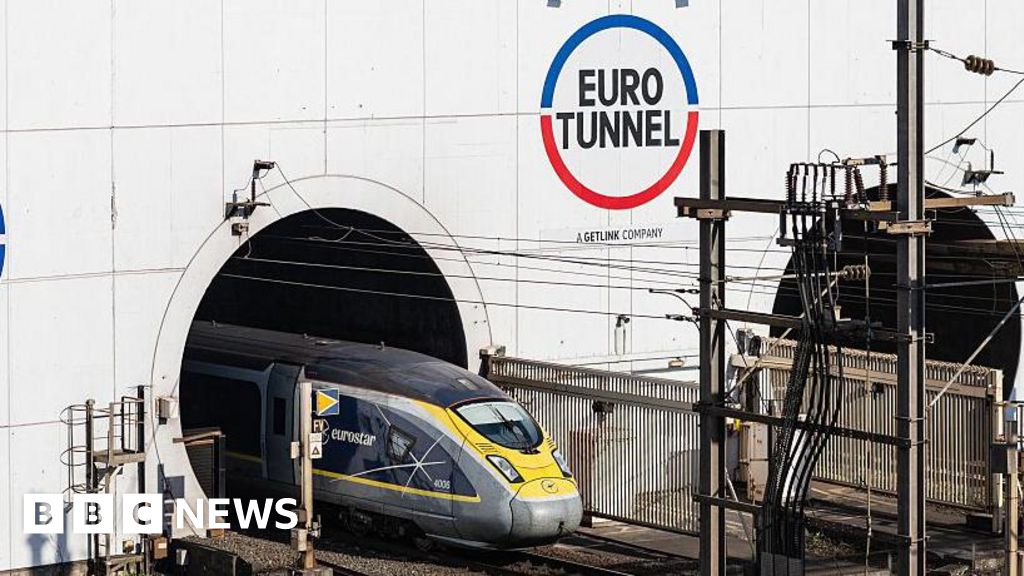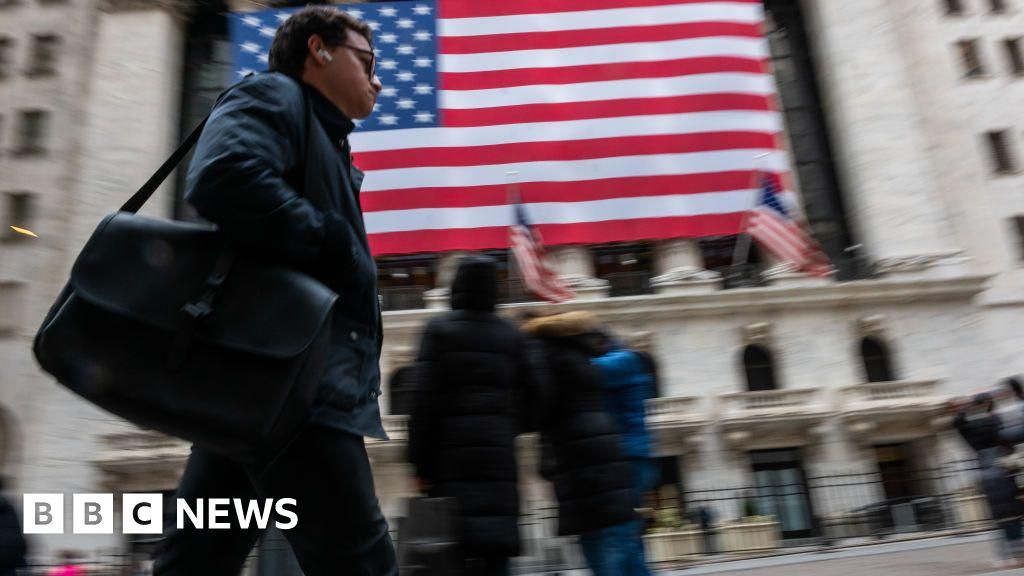Business
‘Seconds count’: Avoiding airplane collisions at airports could come down to cockpit alerts

ABOARD A HONEYWELL TEST PLANE — Aerospace giant Honeywell is building new cockpit alerts that developers say will give airline pilots more precious time to react to hazards at airports.
Honeywell senior test pilot Capt. Kirk Vining late last month put the alerts — called Surface Alert, or SURF-A — to the test by recreating some of the most serious near disasters at airports in recent aviation history.
Moments before landing at Topeka Regional Airport, a Gulfstream G550 business jet was stopped on the same runway where Vining was about to touch down at the Kansas airport.
“Traffic on runway!” called out the automated alert in the cockpit of Honeywell’s test plane: a 43-year-old Boeing 757, as Vining pulled up, aborted his landing and flew around the airport safely.
Honeywell’s Boeing 757 test plane on the ground in Topeka, Kansas.
Erin Black/CNBC
A host of serious close calls in recent years has raised concerns about how to better avoid them in ever-more congested airports. The National Transportation Safety Board and other safety experts have urged more advanced cockpit alerts like the ones Honeywell is testing.
Runway incursions, when a plane, person or vehicle is on the runway when they shouldn’t be, averaged 4.5 a day last year. The Federal Aviation Administration categorizes them by severity, where the top and rarest two are: “a serious incident in which a collision was narrowly avoided” followed by “an incident in which separation decreases and there is a significant potential for collision may result in a time-critical corrective/evasive response to avoid a collision.”
Serious runway incursions at U.S. airports peaked at 22 in 2023, the most in at least a decade. The FAA has added new lighting and other safety technology at airports around the country to try to get to its goal of zero close calls.
‘Good at being a bad pilot’
“He’s very good at being a bad pilot,” Thea Feyereisen, a distinguished technical fellow for Honeywell Aerospace Technologies, said of Vining. Her unit develops new cockpit features for aviators, and she said she expects the new suite to win regulator certification next year.
“Seconds count when you’re operating near the runway, and the sooner you can let the pilots know of a potential serious situation, the better,” Feyereisen said.
The Honeywell test plane wasn’t configured like a regular passenger jet, and there weren’t any paying customers on board. It had a set of roomy seats toward the front of the plane, but in the back, Honeywell flight engineers were positioned at consoles, monitoring flight data and the alerts in real time. Earlier that day, Honeywell demonstrated the technology on a flight with Department of Transportation, FAA and NTSB officials on board, a company spokesman told CNBC.
Vining performed a simulation of another incident from 2023, when an American Airlines 777 bound for London crossed a runway where a Delta Air Lines 737 was taking off instead of holding short of the runway as an air traffic controller instructed. The Delta pilot in that situation aborted takeoff and both planes landed safely at their destinations.
Consoles aboard Honeywell’s test plane, a Boeing 757.
Magdalena Petrova/CNBC
Honeywell said its SURF-A alerts could have given the pilots 10 additional seconds of reaction time with a potential collision notice. The new program Honeywell is testing uses Automatic Dependent Surveillance – Broadcast, or ADS-B data, a GPS for an airplane.
“It’s usually a very good working environment between pilots, air traffic control, airport management,” Vining said. “We get it done safely, efficiently and smoothly. But you could also see just the slightest interruption, a little variation, and things can go wrong very quickly.”
The aerospace giant already offers another suite of alerts that tells pilots if they’re about to make a mistake like landing or taking off on a taxiway instead of a runway, for example, with visual alerts on a screen as well as aural warnings — “Caution! Taxiway!” The so-called Smart X package also alerts pilots if flaps are not set correctly, if the runway is too short, or if they are coming in too high or too fast, among other situations.
“As aircraft get closer to the airports where there are other airplanes that are also flying low to the ground, attempting to land, that’s the most dangerous spot to have a collision occur,” said Jeff Guzzetti, a retired air safety investigator with the NTSB and the FAA.
Those alerts have been on Alaska Airlines planes for years and, more recently, Southwest Airlines has added them. Honeywell said the alerts are currently flying on more than 3,000 planes operated by 20 airlines, but that’s still limited adoption with hundreds of carriers operating worldwide.
“Since we’ve implemented the software, I can’t think of an instance where we’ve had a runway incursion,” said Dave Hunt, Southwest’s vice president of safety and security and a 737 pilot.
American Airlines was also training its pilots on those alerts in the second quarter of the year, according to a lesson plan that was seen by CNBC. Last month, American received its first aircraft with the runway awareness and other alerts on board, a spokeswoman said, adding that its Boeing 737 pilots have now been trained on the tools.
The alerts aren’t required by regulators, but the FAA said it is “reviewing recommendations” from the Runway Safety Alerting Subgroup “to determine next steps,” referring to a group of airline, aerospace, pilot union, government and industry officials that last year recommended new planes include more advanced cockpit alerts in case of situational awareness issues at airports.
“The alerts occur further away from the runway so that if there’s an aircraft on the runway, you’re not having to make that decision very low to the ground,” said Jon Sites, director of flight operations safety at Alaska Airlines.
The Swiss cheese model
Honeywell’s test plane during a demonstration of new anti-collision warning technology.
Leslie Josephs/CNBC
The United States is the busiest aviation market in the world, with 44,000 flights, carrying 3 million travelers a day. Serious aviation accidents are rare, and fatal crashes are rarer still.
But a nearly 16-year streak without a fatal incident was broken on Jan. 29 when an Army Black Hawk helicopter collided into an American Airlines regional jet that was moments away from landing at Washington Reagan National Airport, killing the 67 people aboard the two aircraft and raising concerns about congested U.S. airspace to a fever pitch.
The aviation industry relies on a so-called Swiss cheese safety model, where each slice provides protection but comes with holes that are ideally covered when safety measures are stacked on top of one another.
“Aviation is built on layers of safety upon layers,” said Sites at Alaska Airlines.
Honeywell’s demonstration flight last month from Charles B. Wheeler Downtown Airport in Kansas City, Missouri, recreated a real incident that took place on a foggy morning in February 2023 in Austin, Texas, when a FedEx Boeing 767 plane aborted landing seconds before touching down on the same runway from which an air traffic controller cleared a Southwest 737 to take off.
The FedEx pilot had seen the outline of the Southwest plane through the fog and pulled up and later landed safely. Both flights continued to their destinations safely, but the two aircraft had gotten as close as 150 feet apart, less than the length of the FedEx 767, according to federal safety investigators.
Feyereisen said Honeywell’s technology could have provided the FedEx pilots in the 2023 Austin incident 28 seconds of advanced notice of traffic on the runway, when they only had a few moments to react, according to a report from the NTSB.
Not yet required
Engineers collect data aboard a Honeywell test plane.
Magdalena Petrova/CNBC
Feyereisen said the new technology could be retrofitted on older aircraft and is available for new jets.
“In general, the software costs tens of thousands of dollars [per plane], but not hundreds of thousands of dollars,” Feyereisen said. “So if you’re looking at [a] $150 million aircraft … it is less than a half a penny per passenger cost to the operation.”
Southwest this year added the software to its fleet of about 800 Boeing 737s. It cost between $20 million and $30 million to outfit the planes, Hunt said.
“It is cheaper than an accident,” he said.
On Feb. 25, a Southwest plane aborted its arrival after it was cleared to land at Chicago Midway International Airport when a Bombardier Challenger 350 business jet advanced onto its runway, with the Southwest jet passing less than 200 feet between the aircraft, before safely landing after a go-around, according to the NTSB.
Such close calls “are very, very rare, but obviously they’re something that are concerning and that we would try to mitigate as much as possible,” said Hunt. The Honeywell software is “very effective at ensuring our pilots are aware of where they are on the airport” and “does a really good job of preventing inadvertent runway incursions while taxiing,” he added.
Limitations
A Honeywell test pilot performs a go-around because of traffic on the runway at Topeka Regional Airport in Kansas as part of a demonstration.
Erin Black/CNBC
When developing the warnings, Feyereisen said it’s key not to overwhelm pilots with too much information, known as “nuisance alerts,” which could end up being a distraction from critical safety tasks rather than a help.
“If you’re blasting alerts through a cockpit speaker at low altitudes during a critical phase of flight, such as approach to landing or takeoff, where pilots’ attention needs to be fully focused … you create too many distractions,” Southwest’s Hunt said.
There are also limitations to the existing alerts and the new programs Honeywell is testing. To avoid in-air collisions, commercial aircraft are required to have what’s called the Traffic Alert and Collision Avoidance System, or TCAS, which helps them see traffic around them in displays in the cockpit. But that system is generally used for altitudes of at least 1,000 feet.
That would not have necessarily helped the pilots on the American Airlines plane that was below 400 feet in the fatal collision with the Black Hawk helicopter in January in Washington, D.C.
“We are exploring alternatives to close that gap where you kind of can merge TCAS and ADS-B-type information together,” Feyereisen said.
Sites, the safety director at Alaska, said the D.C. crash was “a huge, unexpected event in the industry, but it’s just, I think, our track record through the last 50 years shows that this is a very, very rare event.”
“That’s why we continue as an industry to try to find even better technology out there and enhancements to the current technology to keep this from ever happening and take the probability down to as low a level as possible,” he said. “I don’t know if in any aviation system you’ll ever get to zero, but I mean, we’re going to try to get as close to zero probability as we can.”
— CNBC’s Erin Black contributed to this report.
Business
Channel Tunnel says UK investment ‘non-viable’ as it halts projects

Eurotunnel, the operator of the Channel Tunnel, has halted its UK projects, claiming “unsustainable” levels of taxation has made any future investments “non-viable”.
The company said it had been informed its business rates would increase by some 200% from next year.
It hit out at the government, arguing that the higher costs were “clearly contrary” to ambitions of growing the economy and increasing investment.
The Treasury said it would support firms “hit hardest” by tax hikes and would continue talks with affected industries over such concerns.
The outburst from Eurotunnel comes days ahead of next week’s Autumn Budget, where Chancellor Rachel Reeves will set out the government’s tax and spending plans.
Speaking to the BBC, Eurotunnel’s chief executive Yann Leriche said: “All our investments, all our plans are becoming unsustainable.
“As you know, business rates, it’s a property tax. And our property – the Channel Tunnel – has not changed. It’s still the same tunnel, the same terminal, the same trains. Everything is equal.
“And so to face such an increase… is a real issue for us. Because we know in rail, we invest for the long term.”
The potential 200% increase in business rates for Eurotunnel is a result of new calculations by the Valuation Office Agency (VOA), which provides the government with valuations and property advice used in setting taxation and benefits.
Mr Leriche said while discussions were ongoing, this could see its business rates rising from £22m to £65m.
A spokesperson for Eurotunnel said such a hike in business rates, along with other taxes, could put its total tax level at about 75% on UK earnings.
The VOA told the BBC the body “does not determine business rates” and that “next year’s liability has not yet been confirmed”.
“This unparalleled and unsustainable level of taxation makes any future investment in the UK non-viable,” the Channel Tunnel said.
“It is therefore impossible to develop new services, create jobs, and pursue what is needed for the long-term development of our activities.”
The company claimed it had “no other choice but to freeze our future investments in railway assets in the UK, starting in 2026”.
The BBC has asked Eurotunnel what investments it has frozen. The Financial Times reported that its chief executive, Yann Leriche, told the newspaper it had scrapped plans to reopen a freight terminal in Barking and to run a new direct freight service from Lille.
The Channel Tunnel is an undersea tunnel linking southern England and northern France. Nicknamed “Chunnel”, it comprises three tunnels, two rail tunnels used for freight and passenger trains, and a service tunnel.
The link between Folkestone and Calais is operated by Eurotunnel.
Separate company Eurostar, Eurotunnel’s biggest customer, operates passenger services through the tunnel between London and a number of other European cities on the continent, including Paris, Brussels and Amsterdam.
A VOA spokesperson told the BBC it had engaged with Eurotunnel and their advisers “on multiple occasions over the past eighteen months to discuss their valuation and fully explain our approach”.
“These discussions remain ongoing, and we are committed to continuing constructive engagement.”
The spokesperson added Eurotunnel could formally challenge the valuation.
Ahead of the Budget, the Eurotunnel called on the government to “provide certainty on business rates”.
The firm has not been alone in issuing warnings to the chancellor, with supermarket bosses claiming part of the government’s business rates reforms posed a problem for its industry.
Business rates are a tax on non-domestic properties such as shops, pubs and offices.
It is expected that Reeves will confirm the rates businesses will have to pay at in the Budget, along with further details, which will come into force in April 2026.
The Treasury said in response to Eurotunnel’s comments that it did not comment on “speculation around future changes to tax policy”.
It said once it understood the “complete” revaluation picture, it would be in a position to “make final decisions” on support.
Business
Number of young people not in work, education or training ‘a scandal’ – minister

It is “an absolute scandal” that the number of young people not in employment, education or training is close to a million, a minister has said.
The number of so-called “neets” aged 16 to 24 remains more than 940,000, latest Office for National Statistics figures showed on Thursday, which skills minister Baroness Jacqui Smith described as “a waste of young lives”.
Speaking to the PA news agency as she visited Mulberry University Technical College (UTC) in east London, Baroness Smith said: “It’s absolutely shocking that we have young people who, at the very start of their working life are not learning, and they’re not earning.
“That is an enormous waste of talent, and really an outrage that young people are being left in that position.
“But it’s also a waste for the future of the country because when you start not in employment or learning, it’s going to be much more difficult for you to get into work later.”
She said the Government is “absolutely focused” on how it can “turn this around” citing the youth guarantee, which is set to ensure 18 to 21-year-olds have access to education, training, an apprenticeship or ultimately guaranteed paid work if they cannot find a job.
“We’re absolutely serious that it is an absolute scandal,” Baroness Smith said.
“It’s a waste of young lives.”
Baroness Smith was shown around the UTC, for students aged 14 to 19, which specialises in technical subjects.
She said making sure that there are “the sorts of courses that will attract young people”, like the ones at the UTC, is one way the Government will bring down the number of neets.
“We’re developing youth hubs, for example, that bring together all of the services, the employment support, but also perhaps mental health support, wellbeing, helping young people with careers advice and guidance,” she added.
“We’re putting them into the places where young people are more likely to go – sports clubs, libraries, community areas – so bringing together that range of support for young people to get into work.”
The trust which Mulberry UTC is part of partners with Mercedes-Benz Grand Prix to deliver a programme offering students extra-curricular activities in science, technology, engineering and maths (Stem).
Asked whether the Government is incentivising other companies to help get more young people into education, employment or training, Baroness Smith said: “There’s every incentive for the sorts of partners that we’ve seen here at the UTC so Mercedes, the National Theatre, to work with schools and colleges, because you’re giving something to young people but what you’re doing is you’re providing a pipeline of future employees.
“So what we find, for example, in T-levels, and I’ve seen T-levels in creative media, what you see in those subjects is where young people get to have an industrial placement with an employer.
“They get a fantastic amount out of it, but the employer also gets to see the type of young people who they’ll then potentially be able to employ or to give apprenticeships to in the future.”
Business
US adds more jobs than expected in September

Natalie ShermanBusiness reporter
 Getty Images
Getty ImagesThe first official data in weeks on the US job market is out, and it showed a surprising pick-up in hiring after a lacklustre summer.
Employers added 119,000 jobs in September, more than double what many analysts had expected, but the unemployment rate ticked up from 4.3% to 4.4%, the Labor Department figures showed.
The US government shutdown, which ended last week after more than a month, had delayed publication of the figures for nearly seven weeks, leaving policymakers guessing about the state of the job market at a delicate moment.
Job growth has still barely budged since April, raising pressure on the central bank to cut interest rates to support the economy.
But policymakers at the US central bank, the Federal Reserve, have been divided about the need for further interest rate cuts. In addition to the health of the job market, they are also monitoring price inflation that ticked up to 3% in September, above the 2% rate the bank wants to see.
Looming over the debate are questions like whether artificial intelligence (AI) will dampen demand for workers over the long term and how a crackdown on immigration is changing labour supply and demand.
Businesses are also wrestling with cutbacks to government spending, new tariff costs and uncertain consumer demand.
A private report this month by outplacement firm Challenger, Gray & Christmas found the number of job cuts in October hit the highest number for the month since 2003, as high-profile companies including Amazon, Target and UPS announced reductions.
On Thursday, telecoms giant Verizon also said it was cutting more than 13,000 jobs, citing in part “changes in technology and in the economy” for the move.
The announcements have raised concerns about cracks in what has been seen as a “low-hire, low-fire” job market.
But evidence of wider deterioration has been elusive, as claims for unemployment benefits remain stable.
Health care firms, restaurants and bars led the job gains in September, while transportation and warehousing firms, manufacturers and the government shed jobs.
“The September jobs report may be backward looking but offers reassurance that the labour market wasn’t crumbling before the government shutdown,” said Nancy Vanden Houten, lead economist at Oxford Economics.
However, she noted noting that the data from October is likely to be weaker, due to government layoffs.
Limited hiring has already prompted the ranks of people without work more than six months to swell this year, though their numbers dipped a bit in September.
Unusually, the strains have been particularly pronounced among those with college degrees. The unemployment rate for that group rose to 2.8% in September, up from from 2.3% a year earlier.
“It’s been pretty challenging,” said Mason Leposavic, who has applied to thousands of jobs since graduating in May 2024 from the Rochester Institute of Technology.
 Mason Leposavic
Mason LeposavicWhile the 24-year-old did eventually find part-time work as a bartender, he has failed to find the kind of office role he hoped for in sales, tech or similar sectors.
He said the search had been dispiriting – especially when he saw firms repeatedly re-post openings he had been rejected from for lack of experience – and he was not optimistic it would improve soon.
He is now without work again after switching states to move back in with his mother in Arizona in an attempt to save money.
“I didn’t realise how hard it would be,” he said. “I think everything really changed after AI, especially in the tech industry.”
Information about the situation has been clouded by the government shutdown, which has limited incoming economic data in recent weeks.
Thursday’s report is the last official release on the job market before the Fed’s next meeting in December.
While September’s job gains were stronger than expected, the report also showed job growth in July and August was lower than previously estimated. The US added just 72,000 jobs in July and shed 4,000 positions in August.
The Bureau of Labor Statistics will publish its next report on the November job market in mid-December, leaving a gap in some data for October.
Analysts said the inconclusive nature of the latest figures was likely to bolster the case for the Fed to move cautiously and hold off on cutting in December.
“The Federal Reserve is still driving in a fog,” said Art Hogan, chief market strategist for B Riley Wealth. “As Chair Powell said – ‘When you are driving in a fog, you slow down.'”
Executives from companies such as McDonald’s, Coca-Cola and Chipotle have warned in recent weeks that lower-income households are tightening spending as rising prices put pressure on their budgets and confidence in the job market sinks.
But a strong stock market, bolstered by upbeat reports from many companies, has helped to sustain higher earners.
The Fed has cut its key interest rate twice since September, leaving it in a range of 3.75%-4%, its lowest level in three years.
But Fed chairman Jerome Powell warned last month that another reduction was “far from” a foregone conclusion in December.
At the time he offered reassurance about the job market, saying the mix of data suggested “that you’re seeing maybe continued very gradual cooling, but nothing more than that”.
-

 Tech5 days ago
Tech5 days agoNew carbon capture method uses water and pressure to remove CO₂ from emissions at half current costs
-

 Politics7 days ago
Politics7 days agoBritish-Pakistani honoured for transforming UK halal meat industry
-

 Business5 days ago
Business5 days agoThese 9 Common Money Mistakes Are Eating Your Income
-

 Sports5 days ago
Sports5 days agoTexas A&M officer scolds South Carolina wide receiver after touchdown; department speaks out
-

 Sports6 days ago
Sports6 days agoApple scrapping MLS Season Pass service in ’26
-

 Business6 days ago
Business6 days agoWhat’s behind Rachel Reeves’s hokey cokey on income tax rises?
-

 Tech7 days ago
Tech7 days ago$25 Off Exclusive Blue Apron Coupon for November 2025
-

 Fashion6 days ago
Fashion6 days agoAfter London, Leeds and Newcastle, next stop Glasgow for busy Omnes


)


)

)







